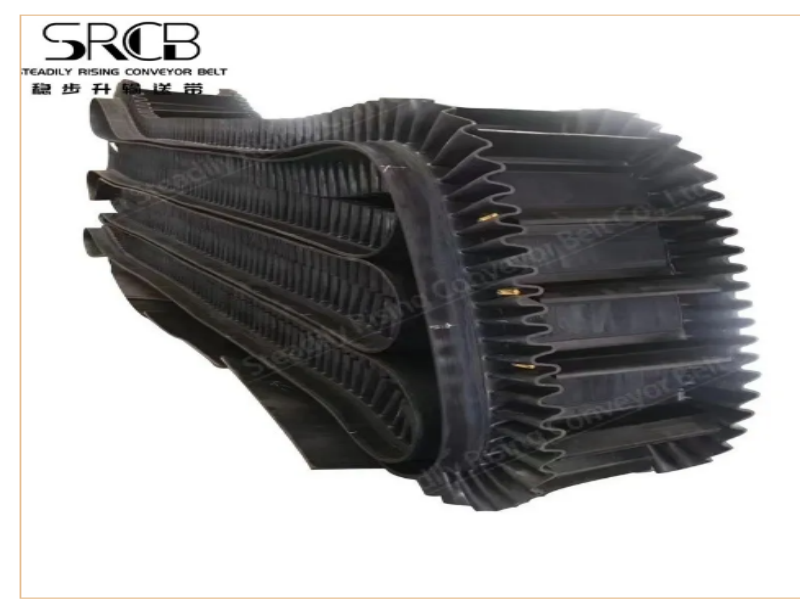
Introduction to install steep inline conveyor belt
2024-07-19 17:13In June 2021, our company shipped an 11-meter steep incline conveyor belt with a bandwidth of 1200mm to a cement plant in India for the transportation and delivery of cement.
The high-angle corrugated sidewall belt consists of three parts: base belt, sidewall, and diaphragm. The ribs prevent materials from slipping and falling. In order to make it easier to bypass the roller, the ribs are designed in a corrugated shape; the function of the diaphragm is to support the material. In order to achieve large-angle conveying, a T-type TC type is adopted.
The ribs and diaphragms are connected to the base belt by secondary vulcanization, which has high connection strength. High-angle conveyor belts are mainly used for horizontal transportation of bulk materials such as coal, coke, sand and gravel, and can also be used for vertical transportation of finished items.
Introduction to install steep inline conveyor belt
Steep incline conveyor belt is a special conveyor belt, with relatively large inclination and strong transmission capacity, that could effectively transport bulk and block materials from one position to another position. In the industrial production, steep inclination conveyor belt has been applied extensively in coal, chemical, power plant, metallurgical and other industries. The following is the introduction to install steep incline conveyor belt methods.
1. Preparation before installation
Before installation, need to check every components of steep incline conveyor belts to make sure they are not damaged or missing and meet the requirements. Meanwhile, have to prepare the necessary tools and equipment, such as the cranes, tire cranes, jacks, etc.
2. Install the bracket
First, according to the design requirement, make sure the installation position of the steep incline conveyor belt on the conveying line, and install the bracket at that position. Installation of bracket should meet the design requirements, and ensure the stability and carry capacity of the bracket.
3. Installing conveyor belt
Placing the conveyor belt reel at the starting point of the conveyor belt line, and use a crane or tire crane to transfer the conveyor belt to installation position. During the installation, should pay attention to maintain the flatness and tension of conveyor belt to avoid occurring wrinkles or too loose condition.
4. Installation Idler roller
Install the idler roller under the conveyor belt to support conveyor belt and make sure conveyor belt could operate smoothly. When install idler roller need to pay attention to the spacing and height, and the contact area between conveyor belt and idler roller is flat or not.
5. Installing drive equipment
Installing the drive equipment at the end of conveyor belt line, to provide sufficient power to make conveyor belt could operate normally. When installing drive equipment, should pay attention to its position and fixing method, and as well as the degree of fit between the wheel and the conveyor belt.
6. Debugging and testing
After finishing the installation of steep incline conveyor belt, need to be debugged and tested to make sure it could operate normally. During the test, need to pay attention to the tension of the conveyor belt, spacing between the idler roller and height, the operation condition of drive equipment and parameters.
In short, the installation of steep conveyor belt need to be carried out carefully and seriously to ensure it could run normally to meet the design requirements. When installing, need to pay attention safety to avoid occurring accidents.

